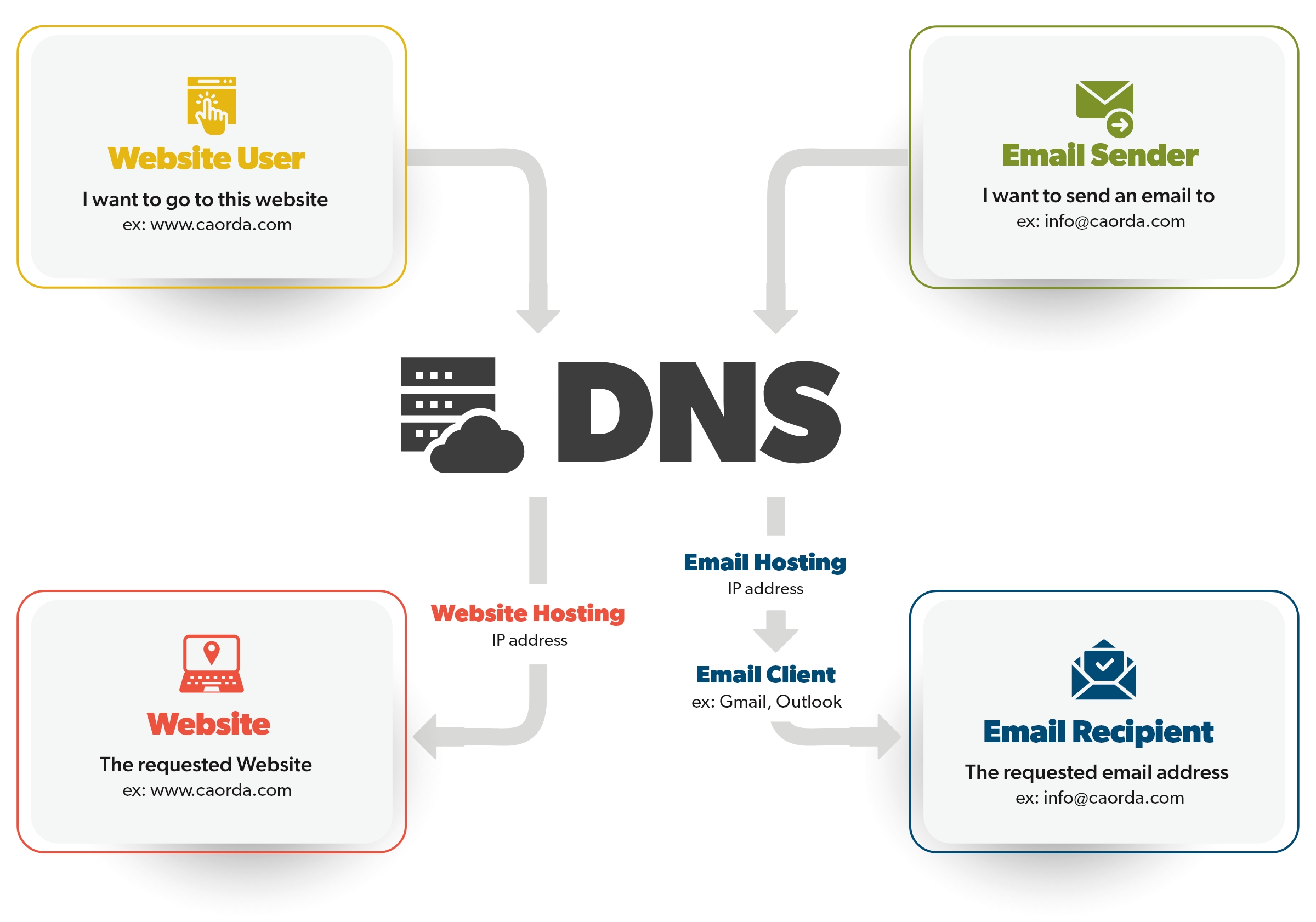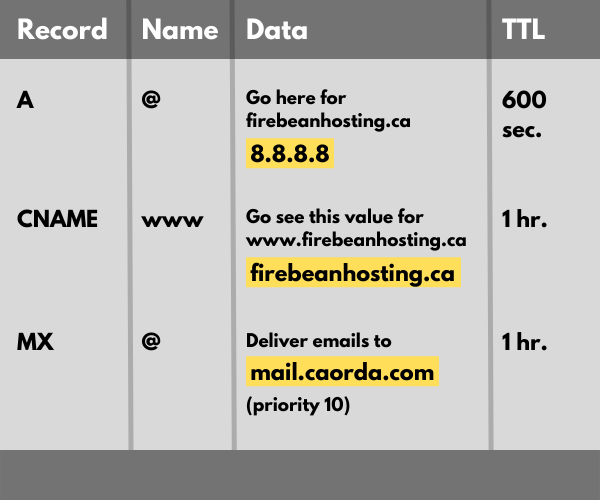In the world of website hosting, there are a myriad of components, functions and systems to understand.
One of those vital systems is called DNS.
In this post, we’ll break down DNS – what it means, its purpose and how it functions. Plus, we’ll introduce you to collection of vocabulary related to DNS.

DNS stands for Domain Name System. It’s a decentralized naming system for the internet.
We humans interact with websites via domain names like google.com, amazon.com, and twitter.com. But our internet browsers rely on Internet Protocol (IP) addresses to communicate. It’s the job of DNS to translate domain names to IP addresses so our browsers can find and display the information we’re looking for.
DNS is the combination of 3 major parts:
-
Registrar
-
Name Servers
-
Domain Records
For simplicity’s sake, let’s use a book as an analogy. Think of the ‘registrar’ as the table of contents, the ‘name servers’ as a page in the book, and the ‘domain records’ as the information and instructions found on that page.

The Registrar
The first step when creating any online presence or service is to get yourself a domain name. Ideally, this domain name will match your company name, product/service name, or something similar, so that other humans can identify your website.
For an example, we will use a fictitious company called Fire Bean Hosting. The company was able to register the domain name firebeanhosting.ca, because it wasn’t taken by anyone else.
To register the domain firebean.com, you can use registrars like GoDaddy or NameCheap, or you could hire a web services company like Caorda to register it for you. You have many options, and there are a multitude of services out there.
Fire Bean purchases the rights to the name firebean.com through a registrar of their choosing. Once they’ve done that, they gain entry to the internet’s large imaginary table of contents:
The Internet ‘Table of Contents’
- …
- example.com
- fire.com
- NEW – firebeanhosting.ca
- firecentral.com
- …
Name Servers
Normally, once you purchase a domain from a registrar service, they will include the use of their name servers. The name servers hold information which will help direct traffic to the correct destination. If you are looking for the website firebean.com, the name servers will hold the necessary instructions to help you find that destination and the server where that website lives.
The Internet ‘Table of Contents’
- …
- example.com – page 100
- fire.com – page 101
- firebeanhosting.ca – page 102
- firecentral.com – page 103
- …

However, you are not required to use the name servers provided by your domain registrar. Sometimes, you may choose to use different name servers offered by a different provider. For example, you may have your domain registered with GoDaddy and have your name servers at your hosting provider (eg. Caorda Hosting – and using Caorda’s Name Servers)
Domain Records
The 3rd part of a domain is the domain records. Using our book analogy, this is like the information and instructions found on the specific page.
The domain records are the individual values you can set for your purchased domain. This can include instructions for where to find your email services, the address of your website, and who’s allowed to send mail on your behalf (this part is great when using Mailchimp or Constant Contact). The amount of available records and types are quite diverse but it is fairly common to just use the settings for your website and email services.
In the most situations you will have 2-3 pieces of information in your domain records. An ‘MX Record’ is used to direct emails to the proper mail service.
For example:
Where should I send email?
-
Send emails to mail.caorda.com first
-
If not available, send emails to mail2.caorda.com
This order is based on priority.
An ‘A Record’ is used to translate a name to an IP. What is the address of my website, firebeanhosting.ca?
-
Go to IP ########
-
IPs are the equivalent of a standard home address you would put in a letter.
Where will I be taken if I search www.firebeanhosting.ca?
-
Go see the record above for firebeanhosting.ca
-
An alias record called CNAME will point you to an entry that explains what value to spit out. Named after ‘see name’, a CNAME tells your computer to go look at the value of a different DNS record.
Extra info: Each item has a ‘remember’ value, or ‘Time To Live’ (TTL). This value tells you and your browser how long to remember something before having to look it up again. These values can differ and change over time. For example, every time you search for the website firebean.com, you get a ‘remember this’ value of 10 minutes. That means for the next 10 minutes, you don’t need to look it up. This ‘remember’ value/TTL is typically set low when changes are incoming, and higher when things won’t be changing. Think of TTL as the memory.

Summary
-
A registrar is where you purchase your domain (firebeanhosting.ca)
-
Name servers hold the list of domain records/instructions
-
Domain Records provide those specific instructions for where to find your hosting services.
Here’s an example of what a domain record might look like:

I hope this helps you gain an understanding of how DNS works. Here at Caorda, we are always here to help. Keep an eye out for our next Hosting Information Breakdown on Website Hosting.
